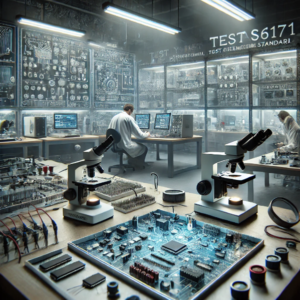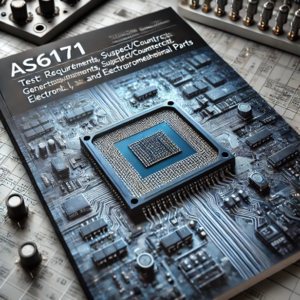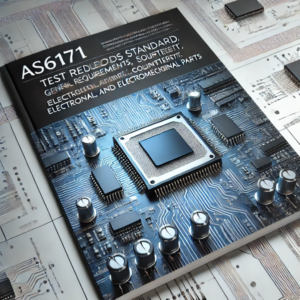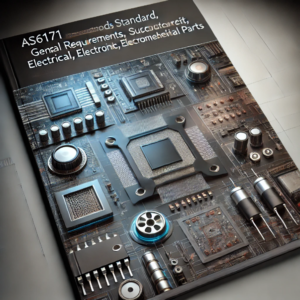AS6171: Standard for Test Methods; General Requirements, Questionable/Counterfeit Electrical, Electronic and Electromechanical Parts
This standard aims to ensure consistency in testing requirements throughout the supply chain by standardizing requirements, practices and methods for testing Electrical, Electronic and Electromechanical (EEE) parts and detecting suspicious/counterfeit parts.
SAE AS6171 REQUIREMENTS
Risk Assessment – The purpose of a risk assessment is to determine the level of testing that should be applied to manage the risk associated with the use of a part obtained from an unauthorized supplier.
Test Ranking Overview – Risk assessment models create a level method based on a risk analysis based on the product, component, supplier, other adjustment factors and types of spurious defects known from different test methods
Test Requirements and Minimum Level Testing – If an Engineer at the user organization requests a higher test level than previously performed on the same batch, only additional tests should be performed.
Suspicious/Counterfeit Part Detection Ranking – Suspicious/Counterfeit Part Detection Ranking is the examination and analysis of parts in a sequence to build confidence, starting with the lowest cost, most effective and easiest inspections, and building on previous test results. It was created on the basis of testing.
Sampling Plan – The sampling plan is derived from the General Specification for Microchips, MIL-PRF-38535. No indication that the part is a suspected counterfeit is allowed. If such an indication is detected and a lot is determined to be suspicious/counterfeit, that part is deemed to have failed the test and testing of the lot must be stopped. Upon notification, the requester has the option to restart the test.
Test Plan – When requested by the requester: A Test Plan must be prepared by the Testing Laboratory and document how the requested Service Description (SOW) and/or Purchase Order (PO) will be implemented. A device-specific Test Plan must be agreed upon between the requester and the Testing Laboratory before testing is initiated.
Analysis and Interpretation of Test Results – An important component of the CP Review/Filter process is the Testing Laboratory analyzing the test results and preparing the final report. This effort should be made in consultation with the requester and, if possible, the user if a suspicious/counterfeit part is identified. This may require additional verification testing or documentation if requested by the requester or user.
Test Report – The Test Report must be prepared by the Test Laboratory Engineer to document how the Test Laboratory followed the Test Plan to implement the counterfeit parts inspection request from the Requestor.
Training, Qualification and Certification – All personnel performing work affecting product quality must be competent based on appropriate training, skills and experience.
Data and Report Storage Requirements – The Testing Laboratory must comply with the following requirements in recording and storing test data and test reports: Saving of data must comply with the Requestor’s request. All test data and test reports provided to the Requestor must be retained by the Testing Laboratory for a minimum of 10 years, or longer if specified by agreement with the Requestor. This storage should be done in a way that protects it from fire, flood and other environmental hazards.















